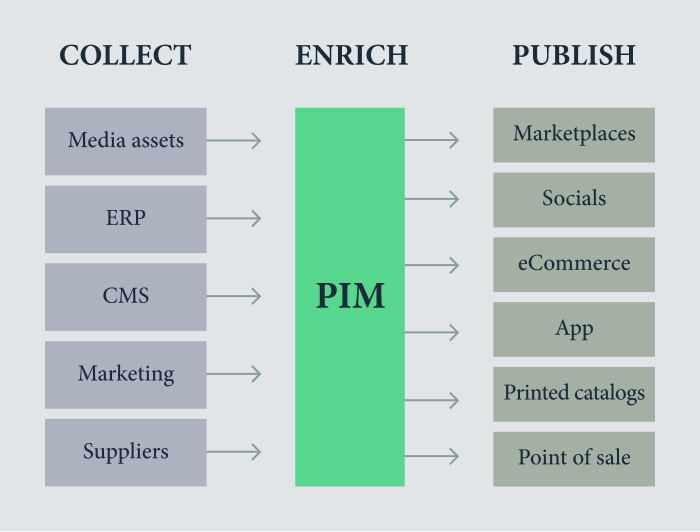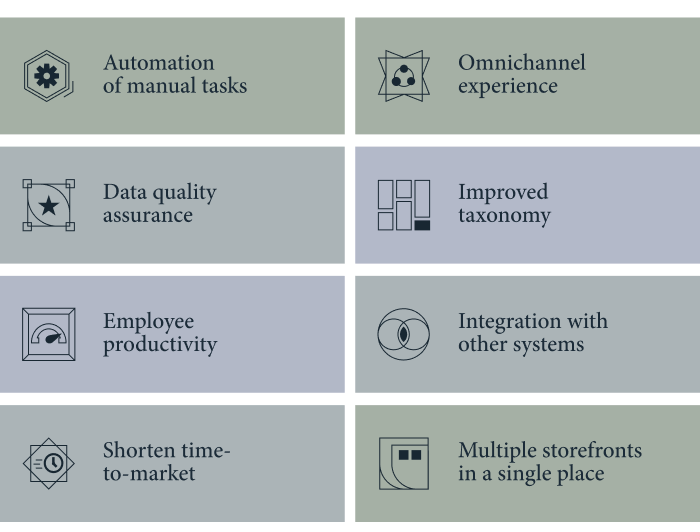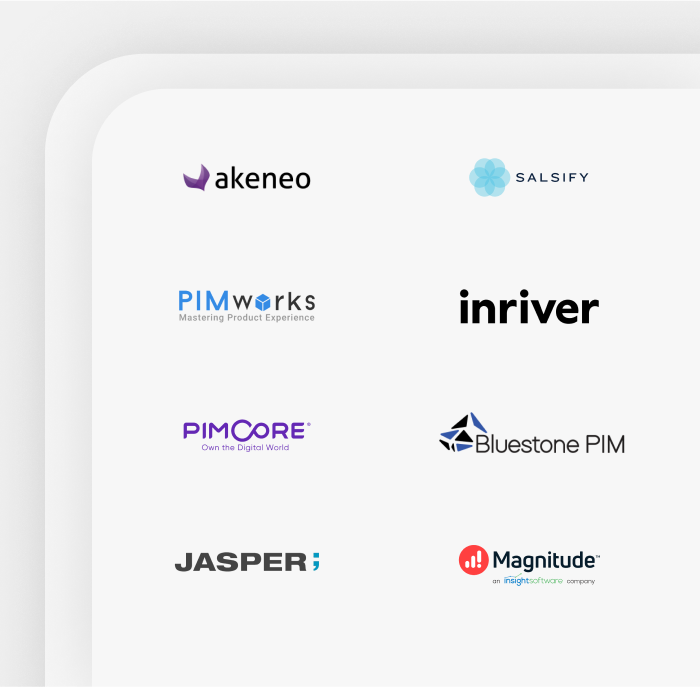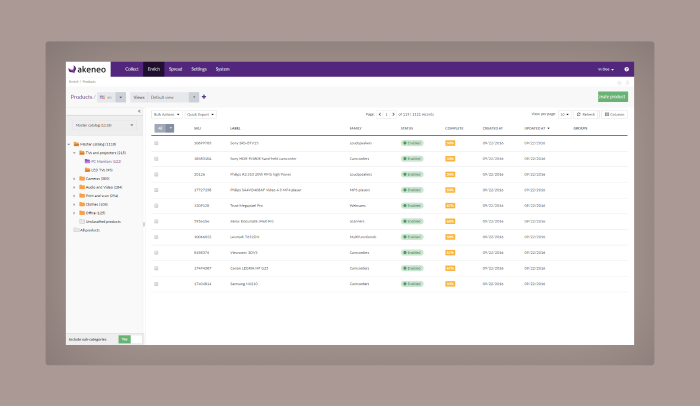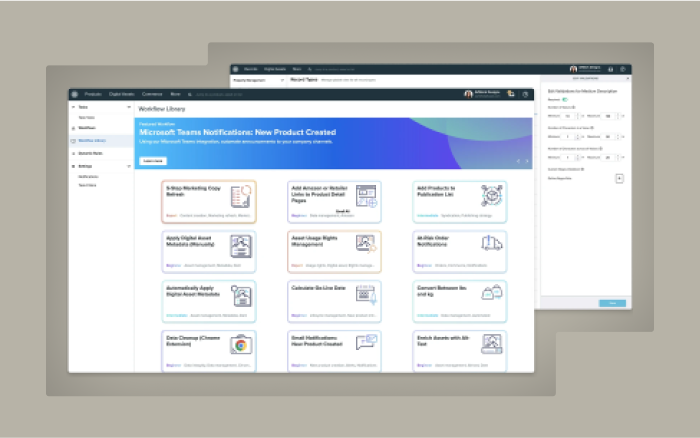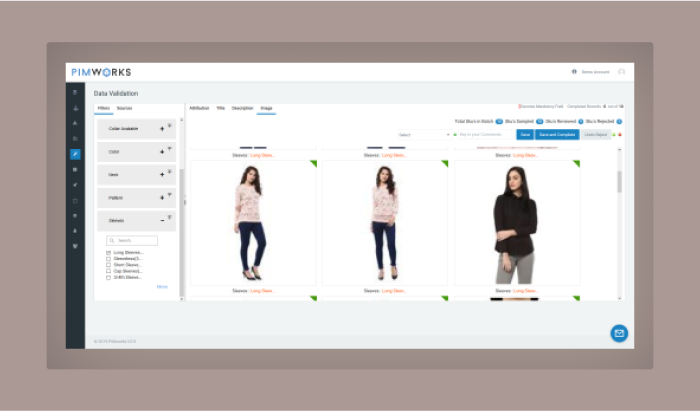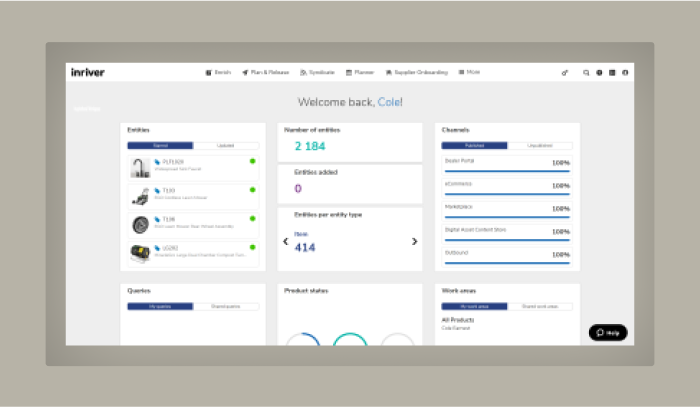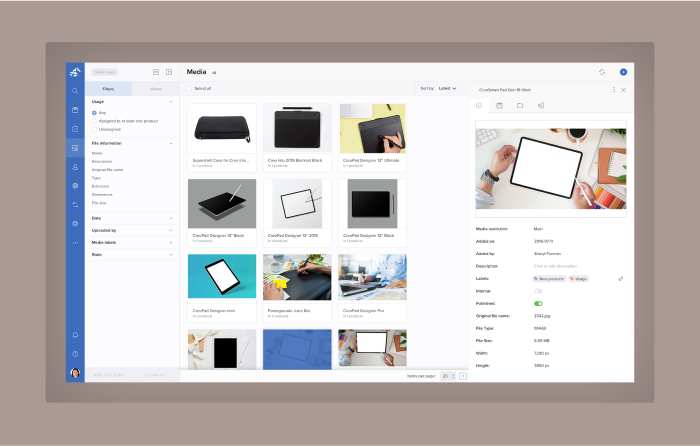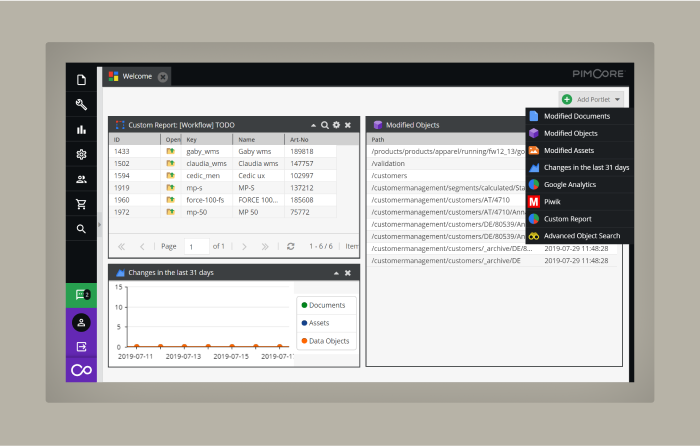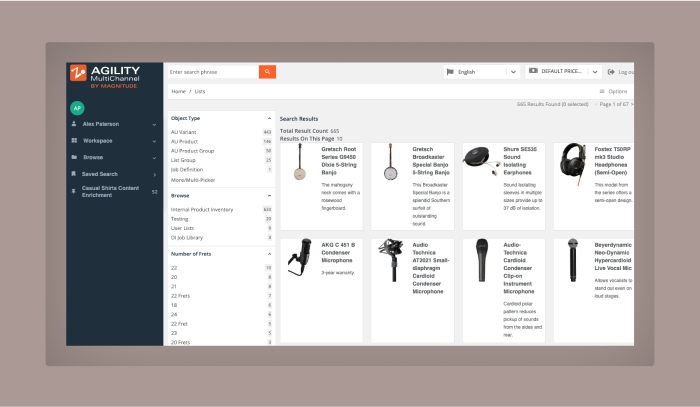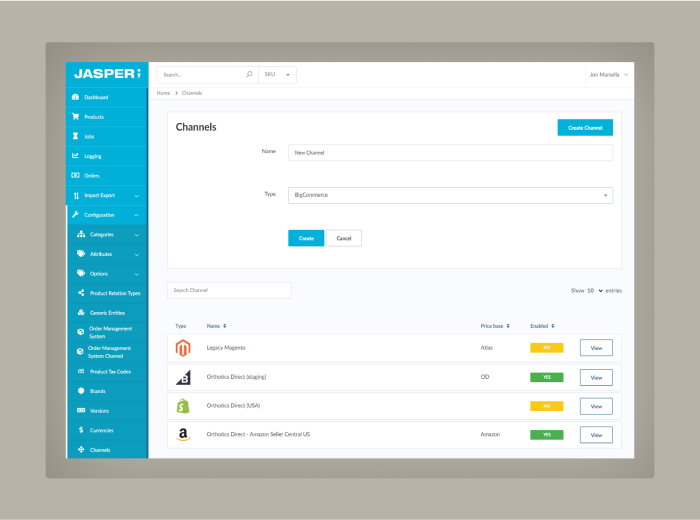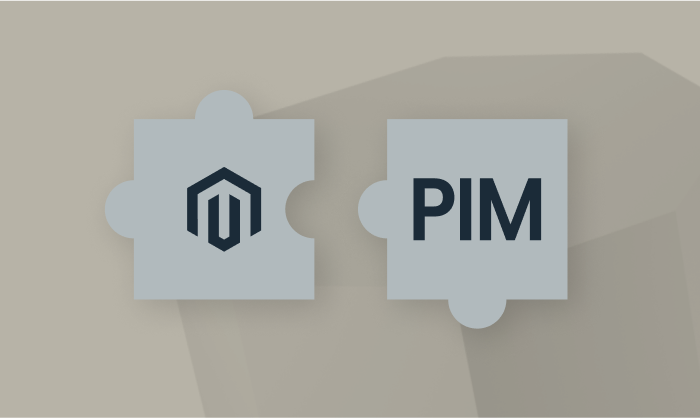The efficiency of sales and marketing tremendously depends on how product data is arranged on the website and distribution channels. Tangled taxonomy, wrong characteristics, and poor content quality can easily kill customers’ interest in products.
No one is immune to making mistakes in monotonous manual work with product data. Even the biggest eCommerce companies, like eBay or Amazon. However, there is a solution. And it’s called PIM.
It doesn’t matter whether an eCommerce store sells less than a hundred stock-keeping units (SKUs), or if it has a way bigger catalog, Magento PIM changes the whole product data management.
Even though Magento, one of the leading eCommerce platforms on the market, provides product data storing, it can’t fully replace the functionality of the PIM solution. Let’s dive into more details.
In this article, you will learn:
- what PIM is and how it works
- key benefits of PIM
- why Magento store needs PIM integration
- the most popular PIMs
- how to integrate PIM into Magento
- tips for Magento PIM integration
What is PIM?
Product Information Management (PIM) is an eCommerce platform designed to collect and control all product data in one place. It’s a single solution for gathering, handling, and optimizing any type of product information:
- basic product data (SKUs, titles, descriptions, etc.)
- taxonomy (categories, attributes, labels, etc.)
- supplier data (spreadsheets, catalogs, certifications, etc.)
- technical details (materials, sizes, ingredients, etc.)
- media assets (photos, videos, documentation, etc.)
- marketing data (keywords, promotional materials, meta information, etc.)
- sales data (customer reviews, prices, testimonials, etc.)
- and much more!
PIM also creates product catalogs, updates and distributes product information through various sales and communications channels, including the company’s website, marketplaces, socials, supply networks, etc.
PIM alleviates product data management by optimizing essential business processes. Operations that usually take a lot of time are speeded up and automatized by the clever system.
PIM has a huge positive impact on eCommerce conversion rates. Find out what eCommerce KPIs to track in 2022.
Key Benefits of PIM Integration
PIM solution is all about making product management easier for eCommerce businesses. Let’s dive deeper into the major benefits and features of PIM:
- Automation of manual tasks
The clever system makes a big deal of manual work automated. PIM imports data from CRM, CSV files, or other sources, and checks it for verification. Then it connects to the DAM system to get media files and documents.
- Data quality assurance
PIM tracks all the errors in product data and suggests improvements if needed. The system prevents product page duplicates, controls the completeness of data, and decreases the number of errors. As a result — fewer customer complaints and returns.
- Employee productivity
PIM integration noticeably decreases the amount of monotonous manual work for employees, which is great for their productivity. They can concentrate on more important and challenging tasks. Most PIM Magento platforms have built-in workflow management tools that also improve all working processes of all team members.
- Shorten time-to-market
Automation of generating catalogs, importing data, and other processes speeds up the launch of new products to the market.
- Omnichannel experience
With the PIM Magento solution, publishing and managing products across plenty of output channels, like marketplaces and socials, becomes way faster and less challenging. It also adapts product data to the requirements and rules of a particular source: web storefront, mobile storefront, social media storefront, etc.
- Improved taxonomy
Navigation is a vital part of an excellent customer experience. PIM allows many product hierarchies and makes categorization logical. It helps customers find the product they are looking for easier and faster. For sales boost purposes, PIM software automatically suggests complementary products (items that are usually bought together with the main product), price changes, and special offers based on certain product specifics, time, location, or other parameters.
- Integration with other systems
PIM solutions easily integrate with almost any eCommerce platform and software, such as CRM, ERP, CMS, business intelligence (BI) software, tracking system, product catalog, etc. Moreover, there are a lot of API-driven PIMs on the market.
- Multiple storefronts in a single place
With Magento, you can have multiple storefronts with the same product catalogs. And PIM serves as one single repository for all of them.
PIM integration not only simplifies product management but immensely streamlines marketing and sales teams’ workflow. It makes it easier for them to keep track of all product data, collaborate with other departments to launch efficient campaigns, and deliver enriched and right product content to multiple channels.
Why Does Magento Store Need a PIM?
You’ve just discovered the benefits of PIM integration, yet you still doubt whether your Magento store needs it? Ok, let’s appeal to numbers and statistics.
Following Scaling eCommerce guide, Magento 2 PIM implementation can help to increase sales conversion rates up to 4X, decrease returns by as much as 40%, and offer up to 3X faster time-to-market.
If you wonder whether PIM is getting adopted by other eCommerce businesses and maybe your competitors as well, consider this: Allied Market Research states that the global product information management market size was valued at $9.90 billion in 2019 and is projected to reach $59.25 billion by 2027. The pandemic is no doubt had a great impact on upscaling PIM demand in the eCommerce sector.
Implementing PIM for Magento costs not little money, so the decision to adopt this eCommerce platform must be well deliberated. “Green” small businesses may do just fine using only CMS to manage product management, whilst ambitious and growth-focused vendors can’t afford to ignore it.
Do you need assistance with Magento development? Contact us to get a personalized consultation on custom Magento development!
You should seriously consider Magento PIM integration if at least a third of the following statements apply to your company:
- You sell internationally or are planning to expand your business to foreign markets.
- You have a high number of SKUs.
- You want to expedite the launch of new products.
- Your employees spend a lot of time on manual work.
- You collect data from multiple suppliers and platforms.
- You receive a lot of both employees’ and customers’ complaints about irrelevant and false product data.
- Your product assortment keeps changing and expanding multiple times a year.
- You want to go omnichannel in both marketing and sales efforts.
- You need to build a deep complex product hierarchy and user-friendly categorizations.
- You are looking for new ways to decrease returns and customers’ complaints, and boost sales conversions.
- You want to optimize product management in all aspects: time, workflow, manpower, etc.
- You want to improve your SEO efforts.
8 Best PIM Software Solutions for Magento
As a Magento development company, we have decent expertise in integrating PIM for our clients from different industries. They are a lot of PIM platforms suitable for Magento, but here are some best of the best from our experience:
Akeneo
Akeneo is one of the most adopted PIM among our clients. It is an open-source SaaS PIM platform that enables vendors to build an effective product experience inside the system, as well as across any marketing, sales, and customer support channels.
This Magento PIM provides the ability to bulk import data from spreadsheets, suppliers, and digital systems, to deliver product information relevantly for each channel and each region. With Akeneo, it takes 15 minutes to put your products online.
It’s available in three editions: Enterprise (for enterprise businesses), Growth (a cloud-native one for midmarket businesses), and Community (free).
Key benefits:
- Advanced rights management
- User-friendly interface
- Translation and localization
- Project management tools
Salsify
Salsify is a cloud-based PIM for Magento, one of the leaders of the market. It offers a range of tools, including analytics and product optimization tools. Salsify is the best option for businesses that actively use Instagram and Facebook as distribution channels.
This vendor identifies its platform as a ProductXM, which is an upgraded version of PIM that focuses on developing a better product experience for customers.
Salsify has demos and a free trial, and it provides custom pricing solutions based on each client’s needs.
Key benefits:
- Bulk product editing
- Optimized collaborative workflows
- Tools and features
- API integration
- Customer service
PIMworks
PIMworks has one of the best intuitive AI technologies that helps to generate detailed reports, automate the entire workflow, create detailed reports, and many more. It also provides an impressive workflow management module, which enables the user to assign tasks in bulk to various teams simultaneously, track and monitor the progress of each task, and improve the collaboration of different teams.
As a cloud-based Magento PIM, it has no limitation on the number of products.
PIMworks’ pricing solutions are customized to the customer’s needs, offering a free demo and a 30-day free trial.
Key benefits:
- Automated data enrichment
- Workflow management module
- Better SEO ranking
- Master record management
inRiver
inRiver is the best PIM software for resellers. It has a self-service portal where resellers get access to specific data provided by product managers.
inRiver is also known for its Elastic Data Model, which is basically an organization of data into entities and relations. The Elastic Data Model makes it easier to organize data and customize the enrichment process, providing customers with a neat user experience.
inRiver’s Planner App helps to control the work processes, plan activities, and cooperate with other teams.
AI-powered smart search technology inRiver Evaluate keeps an eye on how products are displayed across multiple websites and reveals if products are placed under the correct categories and appear under preferred keywords.
The company offers customized pricing solutions and has a free demo.
Key benefits:
- Elastic Data Model
- Dual workspace
- Planner App
- inRiver Evaluate
Bluestone
With Bluestone, you can build a structure for categories and subcategories and export them in various formats. It also has one of the best user interfaces on the market.
Bluestone PIM price depends on key parameters, such as the number of users, SKUs, e-commerce integrations, languages, etc.
Key benefits:
- MACH technology
- User-friendly interface
- Advanced dashboard
- Analytics tools
- Categorization
Pimcore
Pimcore is another widely adopted PIM among Magento stores. This is an open-source enterprise-grade framework that includes features like MDM, DAM, and CMS for free in paid editions.
Pimcore directly integrates with Microsoft Office and Adobe applications, allowing to access product information from the PIM right inside apps. It also has potent auditing and versioning features that help track all modifications of the product cycle.
Pimcore is available in three editions: Cloud, Enterprise, and Community (free of charge).
Key benefits:
- Free MDM, DAM, and CMS
- Microsoft Office and Adobe integration
- Data quality control tools
- Auditing feature
- Workflow management tools
Magnitude Agility
Agility PIM by Magnitude offers a configurable, role-based interface that is highly efficient for an end user. This suitable for Magento PIM is a great option for those companies that work a lot with printed assets. Agility transforms raw product data into a custom catalog in multiple languages and pricing options. This is also one of the best PIM software solutions for dealing with financial data and payment management.
Another great feature is the Data integration module. It enables you to integrate Agility data with any type of in-house database, spreadsheet, or business system and shows integration activity with logging, reporting, and email notifications.
Agility’s Business analytics toolkit provides advanced data discovery, data integration, and data mining capabilities. It includes a plugin from Pentaho and the ability to connect to the BI solution of your choice.
Magnitude Agility has a free demo and offers custom pricing solutions.
Key benefits:
- Roles-based configurable interface
- Product data syndication
- Data integration module
- Business analytics toolkit
- Catalog production management
Jasper
Jasper is a leading SaaS PIM both for small businesses and enterprises. It’s a solution that serves as a central storage for all product data, enables two-way data syncs across entire connected technology stacks, and supports numerous currencies and languages across all eCommerce channels and storefronts.
Jasper PIM has a brilliant custom attributes feature that automates the process of linking attributes with products by assembling them into attribute sets. The attributes include simple text, date, text area, select box, multiselect box, markdown, and JSON. Attribute sets can be assigned to products individually or in bulk in order to quickly configure the required attributes for a certain item or group of items.
Jasper offers a free 14-day-trial and custom pricing solutions.
Key benefits:
- Custom attributes management
- Scheduled pricing automation
- Category management
- Activity tracking
- Custom product relationships
Magento PIM Integration
There are two ways to integrate Magento 2 PIM: using a PIM Magento connector and using an API. Some connectors are made by PIM vendors themselves, and some — by third-party companies. The API option is more complicated compared to the extension one since it requires serious technical expertise.
Either way, to integrate PIM into the Magento platform, follow the next steps:
- Import your product and category data into the PIM system.
- Run a Magento facility test. Make sure that the same PIM database fields exist in Magento.
- Create a PIM connection channel, and give the database fields the same name in Magento and the PIM.
- Install the PIM connector.
- Make sure everything works properly by performing initial tests with a few products.
- Double check if all product data is duly synchronized. Pay attention to images and custom attributes, since they are usually the most complicated content for the synchronization process.
- If all tests show satisfactory results, fully fill the catalog with the rest of the products.
Need help with Magento PIM Integration? Get in touch with GoMage and we’ll help you!
6 Useful Tips for Effective PIM Magento Integration
To make the most of PIM implementation and to avoid mistakes that may lead to losing time and money, consider the following recommendations:
-
Set your goals and expectations for PIM implementation
PIM must align with your business strategy, so before adopting the solution or even choosing one, you need to come up with clear pains and goals for your business. Define what you want to achieve:
- Go omnichannel?
- Expand into foreign markets?
- What do you want to have in your PIM: API integration? A deft AI that eliminates errors?
Knowing exactly what you expect and need from a PIM-Magento integration will help you find the perfect “match” from the PIM market.
-
Put aside ample time for integration and testing
Full PIM setup usually takes from a week to two weeks of implementation and 2-3 weeks of testing. Surely, the whole process may last longer or shorter, it all depends on the volume of data you are uploading.
-
Ask the right questions during a PIM demo
There are plenty of great Magento PIM solutions for any company size and budget on the market, and it may be hard to choose one. By asking the right questions, you can define whether the PIM truly fits your requirements and expectations. Consider questions like: “How should I prepare my storefront for a PIM implementation?”, “How can your PIM help me improve the customer experience?”, “Can your PIM handle a growing number of SKUs?”, “How does your PIM help reduce product data errors?”.
-
Define roles and responsibilities
Allowing everyone in your company to have full access to product data is a huge mistake. The same as not allowing some employees to access any product data at all. It’s vital to choose a PIM platform which enables you to create various roles with different access levels. Your sales team members won’t able to make changes to the product data, but they will get the information they need for their sales efforts.
-
Have a Magento expert in your technical team
Are you sure you have a specialist that can integrate PIM into your Magento storefront? No? Consider contacting the company that provides Magento development services.
-
Prepare your content for PIM integration
No doubt, PIM is a game changer for managing product information. But you won’t be able to get the most from this great solution if your assets are low-quality and old-fashioned. HQ pictures and a neat copy are a must-have.
On a Final Note
No matter what your Magento store sells, how many products it has, or whether you are a small business or a big one, a PIM solution will hugely benefit your eCommerce efforts. Every PIM platform on the market has its own unique features and perks, yet they all with no doubt will provide you with a better customer experience, data enrichment, time efficiency, automatization, omnichannel experience, SEO improvement, and more.
You may be not ready for Magento-PIM integration in the nearest future, but if you plan to grow, there is no way you can do it effectively without PIM.


